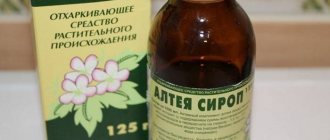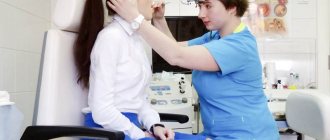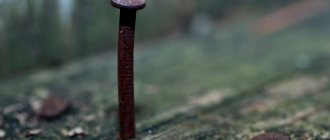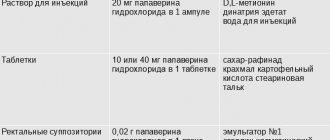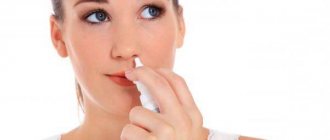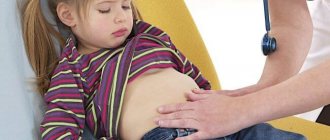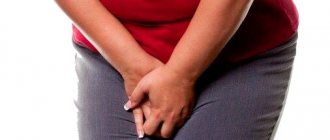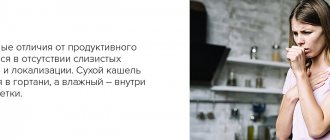Medicine develops along with the development of technology. Many doctors are trying to come up with treatment options that can equally effectively eliminate health problems for both young children and adults. The result of such research was the invention of the nebulizer.
Is it possible to do inhalation when coughing?
Before treating a cough, it is necessary to understand the causes and types of it. Medicine distinguishes several types of cough. Physiological - it arises due to the natural need to cleanse the bronchi or lungs of mucus accumulation and appears after waking up. This is the only type of cough that does not indicate illness.
A hoarse cough signals the onset of laryngitis. The danger is that swelling of the larynx occurs, interfering with the normal respiratory process. It manifests itself with hoarse sounds and a burning sensation during coughing. A dry cough can mean the appearance of various diseases:
During such a cough, attacks can continue until the urge to vomit. A wheezing cough occurs with obstructive bronchitis. When it appears, a slight whistle and a feeling of a lump in grief are formed. Wet is the most common type; it appears with colds, bronchitis and croup. The most obvious sign of a wet cough is sputum.
It is necessary to understand that, unlike conventional steam inhalations, a nebulizer has a therapeutic effect on the respiratory tract. Due to this, the use of the device is very effective for all types of cough. It allows you to get the most from your medications.
Benefits of inhalation
Scientists have noticed the positive effects of inhalation for a long time. It is difficult to find a person who has not at least once breathed in the steam from boiled potatoes. Unlike many medications, inhalation for wet cough can be performed on children of any age, due to the safety and better tolerability of the drugs.
FACT: This improves blood circulation and dilates blood vessels.
This effect relieves pain, moisturizes mucous membranes, and relieves difficulty breathing. For wet coughs, the inhalation method is used to speed up the discharge of sputum.
Nebulizer solutions: dosages, recipes, how to dilute
Each type of cough requires separate medications. This is due to different etiologies of the phenomena. Thus, Troventa is suitable for dry cough. For a child under 6 years old, 8 drops are enough, and for an older schoolchild under 12 years old, the dosage is prescribed - 15 drops, teenagers and adults need 20.
They need to be diluted in 4 ml of saline and used no more than 4 times a day. You can also use Berodual, which is diluted in 3 ml of solution. For preschoolers, the dose is 10 drops, but everyone over 6 years old needs up to 20 drops of the drug. If you don’t want to worry about the correct ratio of the active component and saline solution, use Salgima.
It is suitable for children of any age at a dosage of 2.5 ml per inhalation.
Inhalation for coughing with sputum requires the use of other medications, because it occurs for other reasons. For a wet cough, a Mucaltin tablet dissolved in 80 ml of saline solution is often used.
It is important to achieve homogeneity of the composition and the absence of sediment. Lazolvan is not inferior in popularity and is mixed in equal proportions with saline solution.
For infants under 2 years old, 1 ml of the substance is enough, children under 6 years old need to use 3 ml of the drug, and from 6 to 12 years old - 5 ml. This will improve sputum discharge
Procedures using mineral water are also considered effective. It is used without adding drugs, but before inhalation it is necessary to release all the gas. This will help remove mucus.
Fact: For asthma, a nebulizer can be used to improve the functioning of the respiratory system, just like an inhaler.
Algorithm for carrying out the procedure in a nebulizer
Regardless of the reasons for use and the active substance, a number of rules will need to be followed. They are needed to get maximum results. First of all, you need to take a sitting position. You cannot talk during the procedure.
Tip: Before you start inhalation, check the expiration date; if you store the solution under the right conditions, it will not spoil for 14 days.
The best option would be to use freshly prepared solutions. To create a medicinal composition, you can only use saline solution or distilled water. Boiled or filtered liquid can be harmful to health. Use special equipment to place the solution into the nebulizer.
Prohibited:
- do inhalation in the first hour and a half after eating or playing sports;
- Rinse with antiseptic agents;
- Drink and eat within 30 minutes after inhalation;
Duration and frequency of treatment
The duration of such procedures is 5-10 minutes, depending on the patient’s well-being. The duration of treatment depends on the doctor's instructions. The doctor focuses on the patient’s condition and the type of cough. Most people need to use a nebulizer for about a week. The optimal number of procedures per day is 4-6, it depends on the medications used.
Advice: It is important to take one inhalation before bedtime. This will help avoid insomnia and nighttime coughing attacks.
Inhalations at home without a nebulizer
The use of folk remedies gives good results; we must not forget about the need to consult with doctors. This is done to avoid complications and side effects.
One of the best cough treatments is steam inhalation with baking soda. To enhance the effect, cover your head and the container with the soda solution with a towel and start breathing.
Another option for treating wet cough is using linden honey. A tablespoon of dessert must be stirred in a glass of boiling water, wait until the water cools down a little and begin inhalation.
We must not forget about the classical method, which has been used for several centuries. We are talking about boiled potatoes in their skins. It is recommended to do inhalations several times a day for about a week.
Remember the healing power of citrus fruits. Orange peels should be beaten in a blender until mushy and pour a glass of boiling water. When the product has cooled down a little, you can begin inhalation.
Tip: For children, you can breathe steam for up to 5 minutes, but adults should inhale longer, 10-12 minutes.
Features of inhalation treatment
Any method of treating diseases has its advantages and disadvantages. This also applies to inhalations, so you should consult your doctor first.
In children
If a child is sick, permission to use inhalations for wet coughs in children must be asked from a pediatrician. There are several nuances that are worth paying attention to:
- Give the smallest dose of medication at first;
- A mouthpiece must be used;
- It is important to ensure that the mask fits tightly to the face;
- The mask should be washed after each inhalation;
- Do not combine several drugs at once in one approach;
- Pause between approaches for at least 1 hour.
In adults
Children's recommendations also apply to adults, but they also have their own characteristics:
- Smoking should be avoided one hour before the procedure;
- You should stop drinking alcohol during the treatment period;
- You can use essential oils and herbs;
Inhalations for children under one year old
For infants, it is necessary to make treatment interesting. You can make an offer to repeat various types of breathing after animals or offer another analogy that the baby can understand. Everything must be done carefully; the baby must not be distracted from the inhalation process.
Contraindications and side effects
Using a nebulizer inhalation has its advantages, but this method is not always possible. There are a number of contraindications:
- Temperature above 38;
- Sinusitis, frontal sinusitis or otitis media;
- Pneumonia;
- Heart failure;
- Pulmonary edema;
- Allergy to medications;
- Herbal treatment for children.
If the device is used incorrectly, unpleasant complications may occur. The most harmless ones are dizziness and weakness. In more severe cases, gagging and a suffocating cough may occur. The infection can also spread further through the respiratory organs and cause complications of the disease.
What to do if your cough gets worse after inhalation
There are several reasons for this reaction. First of all, this is due to the presence of contraindications, improper use or allergies to the herbal composition. The best solution in this case is to call an ambulance. Since it is not possible to understand the reasons for the increase in cough at home, it will not be possible to take adequate measures.
Fact: Medical professionals will investigate and treat respiratory disease and its complications without causing harm to health.
Steam inhalation for the treatment of wet cough
Steam inhalations are the simplest and most accessible type; you don’t need to buy special devices to carry them out, although it is more convenient to carry them out using a special steam inhaler. Steam inhalations are not suitable for small children; children are recommended to inhale with a nebulizer.
Steam inhalations are most effective in the treatment of diseases of the upper respiratory tract, larynx, trachea, since the particle size of the drug is at least 20 microns and does not reach the bronchi and lungs, settling on the mucous membranes of the upper respiratory tract.
The most popular inhalation recipe for the treatment of wet cough: thoroughly wash and boil 3 large potatoes, drain the water and breathe steam over the potatoes for 10 minutes. Up to 4 procedures can be performed per day. The course of treatment lasts 3-7 days.
Nebulizer inhalations for coughs with difficult to separate sputum help to liquefy it and speed up its removal from the respiratory tract.
For wet coughs, inhalation with a baking soda solution helps a lot. To do this, 1 tablespoon of the substance must be dissolved in a glass of boiling water. The liquid should be cooled to the desired temperature and the steam should be inhaled for 5 minutes, covering your head with a towel. You need to inhale the steam through your mouth, exhale through your nose. It is not advisable to take too deep breaths, as this can provoke a coughing attack. 1-2 procedures can be performed per day. The duration of treatment for wet cough using this method is about 5 days.
For steam inhalations, you can use sea or mineral water. For inhalation with soda and sea salt, take 1 teaspoon of each substance, pour a glass of hot water, stir and breathe in the steam for 10 minutes.
An effective way to treat a wet cough is inhalation of a honey solution. To carry it out, 1 tablespoon of natural honey, preferably linden honey, is dissolved in a glass of hot water (but not boiling water). The duration of such inhalation is 10 minutes. You can do up to 4 procedures per day. The course of treatment is 5-7 days.
If you are not prone to allergies, you can perform inhalations with essential oils that have antiseptic and anti-inflammatory effects. With a wet cough, they help relieve swelling and inflammation of the mucous membranes of the respiratory tract. To do this, add 5 drops of pine, fir, lemon, spruce, eucalyptus or juniper oil to 500 ml of boiling water. The procedure is carried out for 5-10 minutes. If during inhalation the patient experiences nausea, headache, difficulty breathing and/or other unpleasant sensations, the procedure should be stopped immediately. You can do 1-2 inhalations per day. The course of treatment is about 5 days.
Steam inhalations are not suitable for small children; children are recommended to inhale with a nebulizer.
For a wet cough, the following recipe may be useful: the peels of 2 oranges are crushed to a paste, poured with 1 glass of boiling water. Add 10 drops of fir oil to the liquid. Inhalation is done for 10 minutes 2 times a day. Therapy lasts 6 days.
Inhalation with garlic and soda helps with wet coughs. To carry it out, you need to chop 1 head of garlic, pour 1 cup of boiling water over the resulting mass, add 1 tablespoon of baking soda. Breathe steam up to 3 times a day, the course of treatment is a week.
Remedy for a severe cough: dried mint (2 tablespoons) is poured with water (2 cups), brought to a boil, removed from heat and 2 crushed cloves of garlic are added to the liquid. The product should be cooled to the desired temperature and the steam should be inhaled for 20 minutes. Such inhalations are done up to 3 times a day for 10 days.
A good remedy for respiratory diseases that are accompanied by a wet cough is inhalation with an infusion of chamomile and sage. For 1 tablespoon of dry raw materials, take 1 glass of boiling water. You should breathe over the finished product for about 7 minutes.
The most popular medicinal herbs for inhalation are peppermint, chamomile, coltsfoot, St. John's wort, and thyme. These plants can be used individually or in a mixture. To prepare a solution for inhalation, pour 1 tablespoon of the herb into 1 glass of boiling water, bring to a boil, boil for several minutes, then leave for 1 hour.
What to use for inhalation for children with a wet cough?
Cough is considered a symptom of most respiratory diseases. It varies in strength and intensity and may occur intermittently or continuously.
A wet cough is less painful and painful than a dry cough, but that doesn't mean it doesn't need treatment. Doctors often prescribe inhalations to patients with a wet cough in order to quickly get rid of this unpleasant symptom and normalize the patient’s health.
The effectiveness of inhalation procedures for wet cough
With a wet cough, the sputum in the mucous layer is quite active, which leads to the constant development of convulsions. If it comes off easily, which is quite common in patients, it does not cause unpleasant symptoms.
But sometimes sputum is actively produced, but is not separated from the walls of the respiratory organs - this leads to frequent and persistent coughs. To avoid this and quickly normalize the health of a sick child or adult, inhalations are prescribed to remove sputum, reducing its viscosity and density - allowing the liquid to leave the lung cavity more quickly.
Inhalation for wet cough is considered the safest and most effective method to combat the symptoms of the disease, but in order to quickly overcome the disease, the doctor must choose the right medicine as well as the right dosage of the drug.
In turn, the patient must familiarize himself with all the rules of the procedure - then it will go quickly and successfully, which will allow the patient to spit more easily.
If the cough is wet, there are several inhalation options, including hospital or home surgery. The main difference between this treatment method is the effect of the substance on the respiratory system - it can be vapor, ether or fog.
Which inhalation method to use depends on the cause of the cough and the type of sputum (it is easy to expel and difficult to separate).
Attention! Using a nebulizer is considered the most effective way to treat a cough.
The device can be used to spray small particles of medication into the respiratory tract - they quickly settle on the mucous membrane, which helps to quickly get rid of mucus and restore the patient’s breathing. However, patients are not always allowed to use a nebulizer - it is prohibited for these diseases:
- brochures;
- rhinitis of allergic etiology; rhinitis of allergic etiology.
In this case, the device may increase swelling of the mucous membrane, which is harmful to the patient’s health.
When using the inhaler correctly, the following actions are possible:
- relaxes the respiratory muscles;
- antibacterial;
- antibacterial;
- expectorant.
When using your inhaler correctly, follow the instructions for the device:
- soothes cough;
- moisturizes the mucous membrane;
- liquefies mucus;
- relieves swelling;
- speeds up the patient's recovery;
- removes accumulated fluid from the lungs;
- enhances the therapeutic effect of other drugs.
A significant advantage of inhalation therapy is its local effect on the patient’s body, which allows drugs or folk remedies to achieve a therapeutic effect directly at the site of inflammation, without entering the bloodstream.
Symptoms and description of wet cough
A cough associated with the release of sputum from the pulmonary cavity is called wet. In the language of doctors, this phenomenon is called productive - it contains components of the mucous layer (for example, purulent clots) that form the respiratory system.
A wet cough is a symptom of the patient developing:
- frequent discharge of clear, white or greenish fluid;
- frequent coughing attacks that may cause the patient to suffocate (usually in infants for a month or a year);
- dry throat.
Proper use of inhalations to thin sputum helps to get rid of the symptoms of the disease and makes it easier for the patient to breathe. The main thing is to use the device strictly in accordance with the instructions and follow the advice and recommendations of the doctor.
Indications for procedures
The main dimensions are considered to be the following:
- ODS or ODS;
- Maximum sinusitis (sinusitis);
- Tracheitis (tracheitis);
- Bronchial asthma;
- Adenoids;
- Nasal congestion
- severe runny nose;
- tuberculosis;
- bronchitis (bronchitis);
- pneumonia;
- a sore throat;
- laryngitis;
sinusitis;
nasopharyngitis.
Each of these diseases can cause the development of a wet cough, which leads to a number of symptoms and contributes to the development of complications. All this leads to a deterioration in the patient’s general condition.
Contraindications for therapy
Inhalation of sputum is prohibited in the following cases:
- The patient's body temperature is more than 37.5 degrees;
- there is an admixture of pus in the sputum;
- arrhythmia;
- heart diseases;
- emphysema;
- summer children using nebulizers and patients under 5 years of age using a steam device;
- incompatibility with the components of the solution.
Inhalation is strictly prohibited for the above diseases. In this case, the doctor will prescribe a more gentle therapy so that the lungs or nasopharynx can recover faster.
Types of inhalations
Inhalation is permitted only as directed by a specialist. He may prescribe one of the following procedures to the patient:
Nebulizer therapy
The most effective procedure is inhalation with a nebulizer. They should not be used on children under 6 months of age (in some cases under 1 year of age).
Komarovsky claims that nebulizers are often used in pediatrics, especially when children often suffer from ENT disorders.
Using the device helps to quickly and directly deliver treatment to the site of inflammation.
There are two types of nebulizers - compression and ultrasonic. The operating principle of both devices is the same, so the doctor knows how best to treat the pathology.
Steam inhalation for wet cough
In the absence of a nebulizer, the procedure is carried out with medications, soda, mineral oils, essential oils, potatoes, etc. They dilute mucus well and speed up its removal from the body. The steam inhaler also helps to moisturize the mucous membrane, which is important for certain diseases.
One of the disadvantages of this treatment option is that the steam cannot penetrate deep into the lungs, so the effect of this procedure is less pronounced, and the complex treatment takes a little longer.
The benefits of using a nebulizer for a wet cough
The benefits of using a nebulizer are as follows:
- When coughing in children under 5 years of age, whose body is not yet accustomed to tablets and syrups, inhalation treatment can be used compared to steam - it cannot be used until the 5th day of life.
- Thanks to the nebulizer, the drug penetrates deep into the lungs in a matter of seconds, which allows for faster treatment.
- For the treatment of puppies, a special mask has been developed that does not allow the drug to dissolve in the air and completely releases it into the area of inflammation.
- With the development of a wet cough, people suffering from diseases of the gastrointestinal tract, liver or kidneys are prohibited from taking certain medications orally. Therefore, local therapy in this case is very useful, and the risk of side effects is minimal.
If you look at all the positive features of the nebulizer, it becomes clear why doctors often recommend that their patients undergo treatment with these devices at home.
Effective recipes for the nebulizer
For better phlegm removal, you must use clean solutions prescribed by your doctor. Today we know about many medications that can relieve a patient of a wet cough and normalize the health and function of the lungs.
Inhalation medications are sold in liquid form in vials and nebulas, as well as in tablets, which must be crushed and then diluted with saline solution. Even when coughing, the patient can be prescribed solutions with a disinfectant and expectorant effect on the body.
Most often, sick people are treated with the following drugs:
- Mucaltin - the tablet must be diluted in 80 ml of saline solution (for children - 3 ml, for adults - 5 ml);
- Lazolvan - before inhalation, the solution must be diluted with sodium chloride (9% should be selected);
- Borjomi - inhalations with mineral water are especially successful today (children, unlike adults, must dilute the water with saline solution);
- Berodual - often prescribed to patients with asthma attacks (inhalations require dilution of 0.5 ml of the drug, which can be diluted with 2 ml of sodium chloride).
Fluimucil - the drug quickly removes mucus from the bronchial cavity, diluting it in proportion to saline solution (treatment is required no more than three times a day);
Inhalations using traditional methods
When coughing with sputum, it is allowed to use popular treatment methods. For example, it is allowed to use potato steam, essential oils and mineral water. The indication for the use of traditional therapy is especially often pregnancy in each trimester, when a woman is prohibited from taking drugs orally.
Instructions for inhalation at home
During inhalations, it is important to follow some recommendations that will help achieve the maximum therapeutic effect, speed up recovery time and reduce the possibility of side effects:
- You cannot speak during the procedure;
- fresh solution must be diluted before each inhalation;
- with a nebulizer, only 9% saline solution can be diluted;
- it is necessary to strictly adhere to the dosage and frequency of home therapy;
- After the procedure, it is recommended to rinse both your mouth and face;
- preferably 1 hour after eating;
- without consulting a doctor is prohibited (especially for pregnant women and infants).
The device must be tested before the procedure to ensure it is functioning properly. After this, the diluted drugs should be poured into a container and then inhalation should begin. To do this, the lips should be wrapped around the mouthpieces and exhaled slowly. Then press the spray and inhale the atomized medicine at the same time. If necessary, the manipulations are repeated.
Attention! Inhalation is not considered an independent therapy - it only complements the basic therapy, and also helps to significantly accelerate it.
Features of procedures for children
Only a doctor can tell whether your baby should be inhaled at home. Only he can select the appropriate medications for your baby and accurately calculate the dosage, which depends on the patient’s weight.
Rules for choosing an inhaler and treating children:
- Treatment should begin with a minimum dose;
- maximum inhalation time - 5 minutes;
- the use of a mouthpiece or oxygen mask is mandatory;
- After each procedure, it is necessary to rinse the nebulizer - this prevents blockage and destroys pathogens;
- the time between each procedure must be at least 60 minutes;
- breathing with various therapeutic agents is prohibited.
Parents should pay special attention to the propagation of the drug, where it is important to pay close attention to the dosage of the drug and sodium chloride.
Inhalations during pregnancy and lactation
Carrying a child and feeding him naturally is not considered a contraindication to inhalation. However, in this case it is necessary to choose the right drug and calculate its dosage. And women should follow the home therapy algorithm so that they do not have a negative impact on the developing baby.
Main types of solutions
For inhalation, the following solution recipes are usually used:
With soda
Baking soda softens the mucous membrane and helps thin mucus. Before processing, one or two large spoons of soda must be diluted in a saline solution or in a decoction of lime, calendula or plantain. In addition, the medicinal solution can be prepared with the addition of sea salt, garlic or ethers.
From herbal decoctions
The healing properties of herbs and plants are widely known in the treatment of most lung diseases. The following plants are allowed to be used for preparing decoctions: chamomile, raspberry leaves, plantain.
If the decoction is well filtered, it can also be poured into a spray bottle. Before the procedure, make sure that the patient does not have a fever or allergies to herbal components. The type of herb and dosage of the decoction are prescribed by the doctor, which depends on the individual characteristics of each patient.
With drugs
Patients are often prescribed the following medications:
- mucolytics (mucoltin, lazolvan, ambrobene);
- bronchodilators (Berodual, Atrevent, Berotek);
- glucocorticosteroids (desamethozone, cromogelzal).
Dosage for adults and children
The dose of the therapeutic agent depends on the type of drug, age and condition of the patient. Doctors usually prescribe 5 ml of the diluted drug for adults and 3 ml for children.
As stated in many reviews, the use of a therapeutic agent should only be used as directed by a doctor to avoid side effects and deterioration of overall health.
Doctors' recommendations
Doctors first of all recommend strictly adhering to the dosage of drops, tablets and solutions that have only a positive effect on health. It is equally important to follow the instructions for using an inhalation humidifier with a thermal function.
Inhalations for wet cough
Rating: 5 / 5
Using a nebulizer for a wet cough is only advisable when it is difficult to remove phlegm from the lower respiratory tract. The device delivers medications to pathological places and stimulates the flow of mucus.
Experienced specialists prescribe inhalation with a wet cough nebulizer for airway obstruction. If this is ordinary bronchitis with normal sputum production and production, then you should not use an inhaler.
In this case, the procedures slow down recovery and lead to complications.
Is it possible to use inhalations for a wet cough?
Many experts recommend using a nebulizer at the first signs of illness. However, you shouldn't do this. Coughing is a normal reaction of the body to the penetration of foreign microorganisms. If there is no sputum, the patient suffers from respiratory arrest.
The shock must be delivered. In case of cough syndrome, mucus is easily removed and discharged; inhalation to dilute the sputum is not required. In this case, syrups, mixtures, tablets and massage are much more effective.
The pathological process does not affect the lower respiratory tract, so familiar medications help well.
In cases of inflammation of the lower respiratory tract, inhalation procedures with a nebulizer are prescribed to remove mucus from the bronchi. The effect of conventional medications is not enough, since they are maximally absorbed in the gastrointestinal tract and bronchi, and the lungs reach only a minimal amount of active substances.
Inhalations for wet coughs in children
The child gets sick more often due to weak immunity. In this case, the cold very often turns into a complex form of bronchitis. The disease is accompanied by the accumulation of mucus in the lower respiratory tract and difficulty in releasing sputum.
Inhalation through a nebulizer is considered the most effective treatment method. Specialists prescribe complex therapy, in which the active ingredients of drugs are delivered directly to pathological areas. Inhalation to produce sputum is performed after confirmation of the diagnosis.
The duration of treatment is 3-7 days depending on the complexity of the disease.
What inhalations for wet coughs are prescribed for children by doctors:
- With an expectorant. The drugs dilute mucus, stimulate and facilitate its removal. Usually children are prescribed Mucolvan, Lazulvan, Ambroxol.
- With anti-inflammatory drugs. Glucocorticosteroid-based medications are often prescribed. They effectively relieve swelling, stop inflammation, and stimulate recovery. They have a weak expectorant effect. Breathing procedures are carried out with Pulmicor, budesonide. In rare cases, inhaled antibiotics are prescribed. They are usually prescribed to children in the form of oral syrups and tablets.
- With saline solution. They are diluted in certain proportions of the drug, and are also used in pure form for inhalation. The drug dilutes phlegm, relieves irritation, and facilitates the removal of mucus. Procedures are carried out between the main inhalations and after completion of the main treatment to consolidate the result.
Video
Inhalation with a wet cough at home for children through a nebulizer takes 5 minutes. You should not eat or drink 1 hour before and after the procedure. Last inhaler 2 hours before going to bed. The duration of treatment is controlled by a pediatrician.
Inhalation of a wet cough is not performed in children with normal mucus clearance. In this state, a greater effect is achieved through syrups, tablets, and mixtures. Do not spray on a runny nose . The first symptoms of a cold are relieved using a steam inhaler. This is a device for the treatment of upper respiratory tract diseases.
Inhalations for wet cough in adults
The main indication for inhalation therapy is the presence of mucus in the bronchi and lungs, and the difficulty of expulsion. Do not use the nebulizer without obstructing the respiratory tract. Treatment begins after confirmation of the diagnosis and consultation with a specialist. An inhaler for wet coughs is not needed if the mucus is well drained.
In case of complex bronchitis or pneumonia, doctors will prescribe medications:
- anti-inflammatory;
- expectorant;
- against edema;
- bronchodilator.
May additionally prescribe inhalations for coughs with sputum with an immunostimulating effect. Breathing takes 5-10 minutes. Duration of treatment is 3-10 days.
What to do with inhalation for a wet cough
If the diagnosis is confirmed, the patient requires inhalation treatment, prescribe the following drugs.
Mucolytics
There is a wide range of medications. Medicines are available in pharmacies without a prescription. Price from 50 rubles. Mucolytics are necessarily part of the complex treatment of diseases associated with mucus formation. The drugs dilute sputum, increase cough syndrome, and stimulate the removal of mucus from the body. Children and adults are most often prescribed by specialists:
- mukolvan;
- ambroxol;
- ambroxol;
- azolvan;
- pulmozyme;
- fluimucil.
Immediately before use, the selected drug is diluted with saline solution. Up to 5 ml of the prepared solution is poured into a tray with a nebulizer. The drug is inhaled twice a day - morning and evening - for 5-10 minutes.
Bronchodilators
The drug affects the smooth muscles of the bronchi and lungs and improves their function. It is used to treat difficulty breathing and severe coughing attacks. They also have a mild, slightly expectorant effect. Typically, when coughing, a wet cough is poured into a nebulizer:
- Ventolin Mist;
- Salbutamol;
- Salgim;
- Berotek;
- Berodual;
- Eliminator.
Astana;
Bronchodilators do not treat symptoms, but eliminate them, so they are used in combination with mucolytics, i.e. hormonal drugs.
Anti-inflammatory drugs
Stop the inflammatory process quickly, relieve tissue swelling, reduce the activity of histamine hormones based on glucocorticosteroids. The dosage is selected individually depending on the severity of the disease and the age of the patient. The duration of therapy is controlled by a specialist. Drugs are used at home after consultation. They are often prescribed:
- Pulmicort;
- Kromogolsal;
- Budenit;
- Tafen Nazal.
In case of inflammation, antibiotics are also removed. The drug destroys pathogenic microflora and stops the pathological process. For inhalation, the antibiotic fluimicillo is prescribed.
Procedures you can do without
Very often, after a visit to the doctor, patients turn to the pharmacy with a huge list of medications. Half of them are auxiliary drugs with questionable effectiveness. In addition, folk remedies are often prescribed for wet coughs, which are unacceptable for serious diseases of the lower respiratory tract.
What can we do without this:
- mineral water Borjomi, Esentuki, Narzan. The direct function of drinks is to restore the acid-base balance in the gastrointestinal tract. They are used for the treatment and prevention of diseases of the digestive system. None of the packaging indicates that the water can be used through a spray bottle. Treatment in this manner is carried out at your own peril and risk. Mineral water can be poured into a steam inhaler, which is used to moisturize the mucous membranes of the upper respiratory tract.
- Food soda. To prevent phlegm, inhalation with soda is recommended for wet coughs. The solution is prepared using boiled water. If a nebulizer is used, this medication is not suitable as all ingredients must be sterile. It is recommended to use only saline solution as a solvent. If the self-boiled medicine turns out to be unsterile, then the lower respiratory tract will be infected with pathogens. It begins to ignite, increasing painful symptoms.
- immune stimulants. Injected drugs have questionable effectiveness. It is not possible to test the effectiveness of a prescribed drug. Recovery occurs with the help of basic medications. Procedures for inhaling immune stimulants are not necessary. Improve the body's protective functions with vitamins, proper nutrition, and fresh air. The most interesting thing is that there are immunostimulants that cost a lot of money in relation to homeopathic medicines. The most commonly prescribed interferon is Sinupret.
Do not pour herbal solutions into the nebulizer cup.
Price policy
Domestic drugs are usually cheaper. The effect is identical. But patients notice the presence of side effects, so many still choose expensive drugs from imported manufacturers.
7
| A drug | Minimum price in rubles |
| Mukolwan | 149 |
| Ambroxen | 123 |
| Ambroxol | 288 |
| Lazolvan | 161 |
| Pulmosis | 1480 |
| Fluimucil | 119 |
| Ventolin fog | 276 |
| Salbutamol | 50 |
| Astalin | 138 |
| Salgim | 1284 |
| Berotek | 98 |
| Berodual | 240 |
| Atrevent | 230 |
| Pulmicort | 398 |
| Cromohexal | 163 |
| Budenit | 707 |
| Tafen Nazal | 318 |
The issue of replacing one drug with another should be discussed with a specialist. The shelf life of medicines is 2-3 years from the date of production, the finished solution is from 30 minutes to 8 hours.
Breathe through a nebulizer if syrups, tablets, mixtures do not give the desired result.
Recommendations for inhalations
Inhalation with a spray for wet cough should be carried out according to the instructions for use of the drug.
Inhalations for wet coughs can increase the therapeutic effect of other medications.
Contraindications to inhalation for wet cough:
- purulent process in the organs of the respiratory system;
- the presence of blood in the mucus discharge;
- pneumothorax;
- emphysema;
- tendency to develop nasal and/or pulmonary bleeding;
- neoplasms in the respiratory tract and/or brain;
- history of severe cardiovascular diseases.
Inhalations can be hot (the temperature of the inhalation agent is above room temperature) and cold (the temperature of the solution is not above room temperature). During hot inhalations, you should not breathe over a boiling solution, since a burn to the respiratory tract will only aggravate the course of the disease. Typically, it is recommended to cool the solution for steam inhalation to 50-65 °C. Hot inhalations are not carried out at elevated temperatures. Cold inhalations can be performed at elevated body temperatures.
The solution for steam inhalation should not be scalding
Before inhalation, you need to make sure that the patient is not allergic to the active substance.
During inhalation you should not talk or engage in any other activity. For each procedure, you need to prepare a fresh solution. Inhalation should be done 1-2 hours before or the same time after meals.
After the procedure, you need to rinse your mouth with water and wash your face to remove any remaining solution. It is not recommended to go outside for 1-2 hours after inhalation.
If the cough intensifies after inhalation, the cause may be incorrect selection of the drug, individual intolerance to the components of the solution, or incorrect sequence of use of drugs in complex treatment. If the patient's condition worsens during or after inhalation, you should stop treatment and seek medical help.

